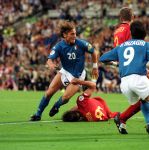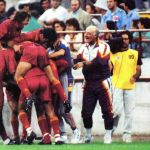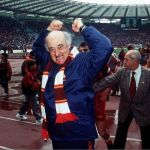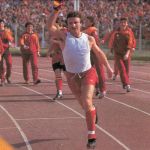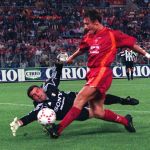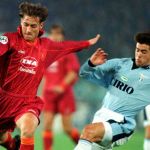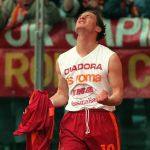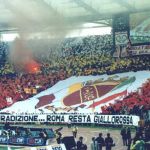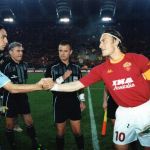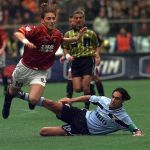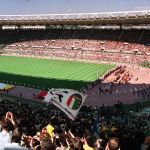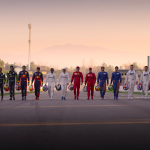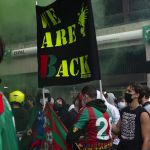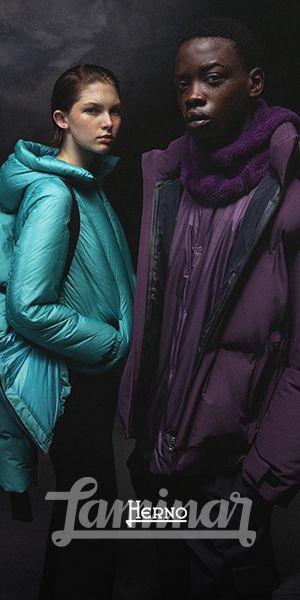After being in theaters for 72 hours from 19 to 21 October, 'My Name Francesco Totti' made by Alex Infascelli has also become available on Sky and Prime Video. It lasts almost two hours and is based on Totti's autobiography edited by journalist Paolo Condò, 'Un capitano', released in 2018 for Rizzoli. In recent years sports cinema has included on its shelves important titles such as The Last Dance and Diego Maradona: documentaries - docuseries - that bring to the screens an alternative, more personal, less field storytelling.
'My name is Francesco Totti' is different: it is above all field. From videos of when on slazed fields he kicks a ball to the farewell game. Infascelli doesn't even convey the final speech. The director - following the biography - spoke of the footballer Totti, making him tell by himself, with his spontaneity and his feelings. It's one of the most significant things in Infascelli's film, along with four others.
A vintage session (and a young Piccinini)
Hearing Totti tell the story of his life is like feeling close, as if the former player were telling it and a friend. His words are intertwined with
vintage images throughout the film: from those on the beach as a child to the first train trip to London, Totti's life passes through the material recorded by friends and cousins with the camera. From the pitch, then, there are many archive images of both local TV and
RAI, among which also a very young
Sandro Piccinini appears - for the true connoisseurs who recognized its tone. He, a real Roman, started working int Tele Roma 56 and in the film he appears while commenting on the Torneo Città di Roma, also shocking some
Proprio Lui! and
Gran tiro!
The undershirts
At one point Totti explains the birth of his love for Ilary Blasi, recounting the indecision about how to conquer it by writing something in the jersey under the game jersey. Totti scored
4-0 in a lazio derby and turned around in a white T-shirt with the words "6 unique". Even today players display jerseys and send written messages to the stands, but once upon a time there was a different style. During the film you see players with
tank tops, Totti himself shows some thick and wide as the playing uniform; there are also
gold necklaces and chains whose only view makes those characters of the Martians compared to today's fits. Totti has somehow inaugurated the season of jerseys under the playing uniforms, celebratory writings under the jerseys that, however, are no longer a trend today. Or rather, the admonition for the exultation of taking off the shirt - originating, it is said, from Pruzzo, and sanctioned in Serie A since 2004 - has been waning due to the regulation; you can still see celebratory writings and jerseys, almost always for injured comrades or political causes, but never exposed as Totti had taught. However, he had a pupil:
Osvaldo.
The look evolution
As her popularity has increased, Totti has also changed the way she shows up to the public, both in outfits and looks. With clothes on, AS Roma's number Ten has always been bold. Great bomber jackets typically from the beginning of the year 2000, followed by the cut that most of all made Totti famous, that is, long hair. It was the time of Nike commercials, the spoon at San Siro and the combination of footballer-wags. In practice, all his icon before the aesthetic breakthrough of the 2006 World Cup, when Totti entered in his thirties and modified (in part) his style. In the film, after Germany 2006, you see more sweaters, sweaters, some jumpsuits. Even the looks become more sober, with hair always short, but it was actually a paradoxical cut: the more Totti seemed to start on the bench, the more in reality the desire to play grew, and the short hair, instead of giving a senile touch, indeed exalted his young spirit.
Coach Carlo Mazzone's coats
That AS Roma's jerseys are a historical football item is beyond doubt, but little has always been said about training. Especially
Mazzone's one.
Carletto appears in the film for a few minutes after about twenty minutes, and between Trigoria, retreat in the mountains and bench, he shows off all his working-class style with his outfits. The
grey and yellow-red tracksuit for training is a gem, as are the long
baggy coats typical of the Nineties. Wide, with big sleeves and the
Lupetto - at the time the symbol of the team - sewn a little everywhere. Also clearly visible are the three orange
adidas stripes along all sleeves, and by the way, 'My name is Francesco Totti' is also an opportunity to review the adidas period with AS Roma, not too celebrated beacause of the low results of the Giallorossi in that period. The adidas shirt was also unique: old school symbol of adidas, Lupetto on the right, orange collar and total red shirt. Sponsor?
Barilla.
The Stadio Olimpico in the Nineties
There is a lot of football in 'My name is Francesco Totti', so the
stadium is the main theater of the whole narrative. The Stadio Olimpico is in fact at the center of many scenes - the film opens with a shot of the plant - and all the great moments of the life of Totti, with the exception of a few, are filmed all inside the ground. Today there is a lot of criticism circulating on the Capital stadium - AS Roma wants to redo a new one - but the
aesthetics of the Stadio Olimpico of the first two thousand is something inimitable. From the film about Totti you can see how the stadium was hotter and more generous than it has been in recent years - in this period, then, watching pitch invasions and crowds of fans is quite nostalgic. The large entrance gates to the camp covered by banners, the smoke that makes the size of the curves fade, the ancient brick in the parking area of the coaches. Then, many other details that define the aesthetics of the
Serie A of the first two thousand: the old TIM logo, the different balls every game, the fleets of policemen on the sidelines. Basically another world, when Totti was there.

